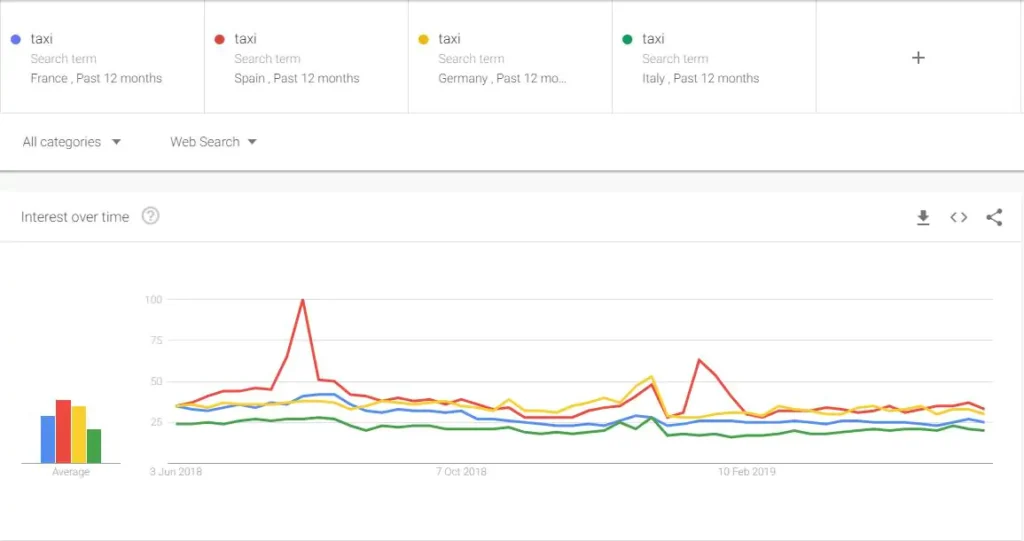On the face of it, Italian SEO looks straightforward. But there are a few quirks that can trip you up if you’re not careful. Here’s how to rise to the top of the rankings.
There’s never been a better time to expand into Italy.
Italian consumer confidence is slowly recovering from the country’s financial problems. And there are plenty of opportunities to catch customers’ attention.
88% of Italians use the internet every day, spending over six hours online. This will keep increasing as internet speeds accelerate (they charged ahead by 35% in 2018). And that’s especially good news given Italians aren’t just browsing – they’re buying too.
All in all, Italy is an attractive prospect for brands online. If you’re a luxury or fashion brand, even better – both categories are growing steadily.
But your impact will be limited if customers can’t find you online. 85% of consumers use a search engine to look for local businesses, so Italian SEO is essential. Here’s how to rise to the top of the rankings, increase brand awareness and drive sales.
GOOGLE RULES THE ROOST
As with most of Europe, Google is the king of Italian SEO. It claims 96% of the market share, meaning you won’t need to get to grips with an unfamiliar platform.
However, be aware that Italy tends to lag behind other countries when it comes to introducing new PPC features. And it stands to reason the same may also be true when it comes to rolling out algorithm updates.
For example, Bing Shopping is currently not available in Italy. This is a PPC service that allows brands to display product ads on Bing’s SERP. Given the overwhelming dominance of Google in Italy, this shouldn’t affect you too much.
But Google doesn’t appear to treat Italy as a tier one market either. Key features like Merchant Promotions aren’t available in the region – and likely won’t be anytime soon.
So yes, rely on Google for your Italian SEO and PPC strategies. But don’t assume you’ll be able to transfer your approach wholesale from other markets. Instead, do your research and come up with a localized strategy.
THE TRUTH ABOUT KEYWORDS
Time for a hard truth about Italian SEO: Italy generally has fewer relevant, valuable keywords than in other European countries. And the demand is lower too.
Take the keyword ‘taxi’ for example. It’s used in French, German, Italian and Spanish. But search demand is significantly lower in Italy than elsewhere:

(Source: Google Trends)
Of course, this doesn’t have to be a bad thing. It’s easier to narrow down your choices and choose the most appropriate keywords. But it does mean you’ll need to manage your expectations. Directly comparing the results of your Italian SEO efforts with other countries may not be the best performance indicator.
Interestingly, 62% of Italians only speak Italian, but many English terms have snuck into the language they use. For example, we recently carried out some Italian keyword research for a fashion client. Their Italian customers were searching for ‘joggers jeans uomo,’ ‘ripped jeans uomo’ and even ‘super skinny jeans uomo’.
Keyword translation may miss the mark here. It’s entirely possible a translator will opt to avoid using non-Italian terms. But with lower search volumes available, you’ll want to be sure you’re capturing the most relevant keywords. That’s why we always recommend international keyword research. It’s a much better option for maximizing your site’s visibility.
GO MOBILE
There are six million more smartphones in Italy than there are people. So it’s no surprise mobile search is popular in the region.
Of course, you should already be factoring mobile into your Italian SEO strategy. Google’s been rolling out mobile-first indexing for a while now, and it’ll be the default for all new domains from July 2019. To rank highly, your site simply has to be mobile-ready.
But Google’s transition from search engine to answer engine means you need to think about more than just page load times. Google’s been displaying more and more knowledge graph content on the SERP. This is dramatically reducing mobile click-through rates, potentially limiting the exposure your brand receives. So what can you do about it?
- Use tools like Answer The Public and SEMRush to identify featured snippet opportunities – and optimize for them.
- Mark-up schema to rank for rich snippet content like products, reviews and FAQs.
- Don’t forget to claim and optimize local business listings so you can rank for local searches too.
These steps will also have a positive knock-on effect for voice search. 30% of Italian internet users issued a voice search or command last month. Optimizing for mobile will put you in a good position to rank for these searches too.
FINAL THOUGHTS
Ultimately, Italian SEO is pretty similar to its European neighbours. However, it’s not just business as usual. Yes, you should still optimize for Google and its ever-changing ways. But with lower search demand and fewer features available to help, you’ll need to be savvy. Make sure your SEO strategy is well-researched and localized to get the most out of the Italian opportunity.
If you’d like help optimizing your site for Italy, get in touch – we’d love to help.
Photo by The Lazy Artist Gallery from Pexels


